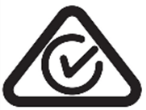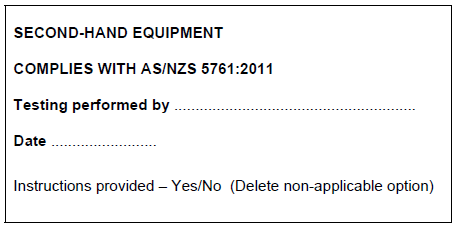Overview
There are regulations that apply to the supply of electrical equipment and appliances. The requirements set out in the Regulations must be followed. Failure to do so is a criminal offence.
- Part 4 of the Electricity Safety Act 1998 – sets out the specific provisions for approval, supply and use of electrical equipment in Victoria.
- Electricity Safety (Equipment Safety Scheme) Regulations 2019 (EESS)
EESS
The Electrical Equipment Safety System (EESS) is a framework that regulates the supply chain of in-scope electrical equipment.
The term 'in-scope' is defined in law and means electrical equipment that is:
- rated at (120V to 1500V) DC or (50V to 1000V) AC, and
- designed or marketed as suitable for household, personal or similar use.
Responsible suppliers and EESS
Responsible suppliers (an on-shore manufacturer or importer) must meet all the requirements of the EESS, including:
- Ensuring that any in-scope risk level (Level 1, Level 2 or Level 3) electronic equipment offered for sale meets the safety requirements of the EESS (including the Equipment Safety Rules) and is electrically safe.
- The Responsible Supplier and any in-scope electrical equipment offered for sale are correspondingly registered.
- Payment of all corresponding registration fees.
- The product is marked with the Regulatory Compliance Mark (RCM), as shown below, in accordance with the requirements listed in AS/NZS 4417.1 and AS/NZS 4417.2.
EESS provides information about the steps for compliance with EESS.
Persons other than a responsible supplier
Second or subsequent suppliers in the supply chain must ensure that electrical equipment offered for sale complies with the following:
- equipment is sourced from a Responsible Supplier who is registered on the EESS Registration Database
- the equipment is registered on the EESS Registration Database (mandatory for Level 2 and Level 3) against the registered Responsible Supplier
- the equipment is marked with a Regulatory Compliance Mark (RCM) in accordance with the requirements listed in AS/NZS 4417.1 & AS/NZS 4417.2.
Further information is available on the EESS website about compliance with EESS by the second or subsequent supplier.
Download a printable copy of the fact sheet:
Fee schedule for equipment safety
The fee schedule for electrical equipment applications and penalties is available in the Equipment safety fee schedule.
Selling Extra Low Voltage (ELV) and battery-operated equipment
Extra Low Voltage (ELV) is electrical equipment that operates at a voltage below 50V AC RMS or 120V (ripple-free DC). Equipment operating at ELV can still present a safety hazard, hence the need to ensure that they comply with the relevant product safety standard.
In Victoria, all electrical equipment, including those that are ELV powered, are required to be electrically safe before they are offered for sale.
Download a printable copy of the information sheet:
Sale and supply of second-hand equipment
Second-hand equipment is electrical equipment that has previously been supplied or sold, other than by wholesale, but does not include electrical equipment:
- Acquired by the person for the purpose of using the equipment for a process of production or manufacture
- Acquired by a person (other than a second-hand dealer) for the purpose of re-supply; or
- Returned to a supplier for refund or exchange.
If you are selling or supplying second-hand electrical equipment you must make certain information available to prospective buyers.
Organisations and individuals supplying or offering to supply second-hand electrical equipment must be aware of the legal obligations imposed on them under electricity safety legislation.
These are the requirements:
- If the item of in-scope electrical equipment is tested for safety, the requirements set out in AS/NZS 5761 and tagged as per the requirements of AS/NZS 5761
- if the item of in-scope electrical equipment is not tested for safety, that the item of in‑scope electrical equipment is
- labelled or tagged as second-hand equipment or with the word “used”; and
- accompanied by information stating that the item of in-scope electrical equipment has not been tested for safety.
Standards can be purchased from the Standards Australia store
Date: 19/12/2025 4:23
Controlled document
The currency and accuracy of this document cannot be guaranteed once printed or saved to a storage device. If in doubt, please check the ESV website for the current version.
Reviewed

